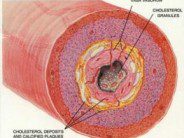Diet and exercise have long been known to improve and even reverse diabetes type 2 through improvements of insulin sensitivity and decreased insulin resistance. Decreased muscle mass (sarcopenia) has been shown to be a risk factor for diabetes type 2 by causing insulin resistance. Recently, researchers lead by Dr. Preethi Srikanthan from the University of California at Los Angeles have shown that increased muscle mass decreases the risk of developing type 2 diabetes by decreasing insulin resistance. Their research results were published online ahead of print in the Journal of Clinical Endocrinology and Metabolism. For their investigation, the researchers performed a cross-sectional study of the National Health and Nutrition Examination Survey III (NHANES III). Data from 13,644 participants was evaluated for blood glycosylated hemoglobin level (HA1C), prevalence of transitional diabetes, pre-diabetes, or overt diabetes. In addition, they measured the homeostasis model assessment of insulin resistance (HOMA-IR). Skeletal muscle mass was measured by bioelectrical impedance and then used to calculate the skeletal muscle index (SMI). The researchers adjusted for confounding factors such as age, ethnicity, sex, generalized obesity, and central obesity. It was found that for each 10% increase in SMI there was an 11% relative reduction in the HOMA-IR and a 12% relative reduction in the pre-diabetes prevalence. The authors wrote, “skeletal muscle mass relative to body weight was found to be inversely associated with insulin resistance and the risk of prediabetes. This inverse relationship was not limited to the lower, sarcopenic end of the muscle mass distribution in the population, but was seen over the whole range so that increases in muscle mass above even average levels were associated with additional protection against insulin resistance and prediabetes… This underscores the public health importance of monitoring muscle mass (relative to body size) in addition to BMI and waist circumference in assessing an individual’s metabolic health, and it suggests a potential role for muscle-building exercises in preventing metabolic dysfunction”. Future studies will need to focus on the extent of muscle building exercises needed to decrease insulin resistance and improve insulin sensitivity and glucose metabolism in individuals with diabetes and pre-diabetes.
See the YouTube video interview with Dr. Preethi Srikanthan below:
Reference:
Preethi Srikanthan and Arun S. Karlamangla “Relative Muscle Mass Is Inversely Associated with Insulin Resistance and Prediabetes. Findings from The Third National Health and Nutrition Examination Survey” The Journal of Clinical Endocrinology & Metabolism published online before print July 21, 2011 doi: 10.1210/jc.2011-0435










 DrSamGirgis.com is a blog about medicine, nutrition, health, wellness, and breaking medical news. At DrSamGirgis.com, the goal is to provide a forum for discussion on health and wellness topics and to provide the latest medical research findings and breaking medical news commentary.
DrSamGirgis.com is a blog about medicine, nutrition, health, wellness, and breaking medical news. At DrSamGirgis.com, the goal is to provide a forum for discussion on health and wellness topics and to provide the latest medical research findings and breaking medical news commentary.
{ 0 comments… add one now }